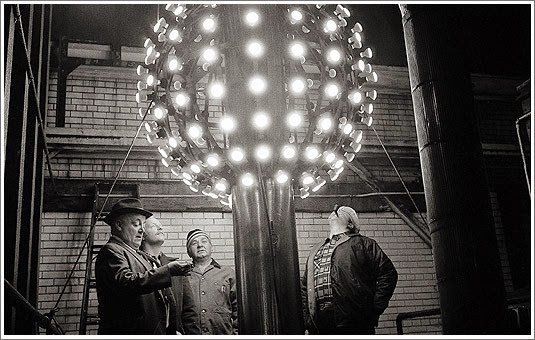At exactly 12:00 AM and one second on January 1st, 1907, the first ball that was dropped as part of the New Year’s Eve festivities in Times Square reached the roof of the New York Times building, signaling to the gathered revelers that a new year had begun. Adolph Ochs, publisher of the New York Times, had organized the grand celebration in Times Square and had hoped for fireworks to entertain the crowd, but when those plans were nixed by the city he turned to what was then an old standard: the dropping of a time ball.
To our modern eyeballs, the phrase “time ball” doesn’t mean much. But Adolph Ochs didn’t just pull the concept out of thin air. Time balls began their usefulness as ship captains and navigators sought easier ways to calibrate the chronometers on their ships. They used these chronometers as a way of measuring time, and using that measurement to determine distance travelled. By comparing their distance traveled to their bearing, they could determine their location, a very important piece of information when traveling beyond sighting distance of land. Captains would pay to have their chronometers removed from the ship and calibrated on land. It was a nuisance, both in terms of the required payment and in the amount of time it took to complete the process.
One enterprising captain had a very good idea. He erected a flagpole visible from the harbor with two large balls on it, one of them able to slide up and down. Just before noon, the lower ball would slide up and meet the upper ball. At the exact stroke of noon, when alerted by an incoming telegraph, workers would begin lowering the lower ball. Ship captains would be able to calibrate their chronometers to high noon at the exact moment they spotted daylight between the two balls. The system wasn’t perfect, but it was a vast improvement on the old way of doing things and it quickly caught on.
Time ball drops were so useful as a way of communicating exact time that they soon spread around the world. This was a time before standard time, time zones, and pocket watches that would last longer than a single winding, and so it was a regular occurrence that people would need to calibrate their timepieces. Ball drops coordinated by telegraph became commonplace, but as timekeeping was improved upon they fell by the wayside. When Adolph Ochs was searching for a replacement spectacle for his fireworks, a bedazzled time ball would have been an ideal balance between the splendor of the still relatively new electric light, and the nostalgia of marking a time milestone with a dropping ball. One thing he did differently from the original time balls was instead of beginning the drop at midnight, the ball began dropping sooner and landed exactly at the start of the new year. Of course, now that New Year’s Eve is the last remaining vestige of this traditional timekeeper, it goes entirely unnoticed that we’re doing it all backwards.

